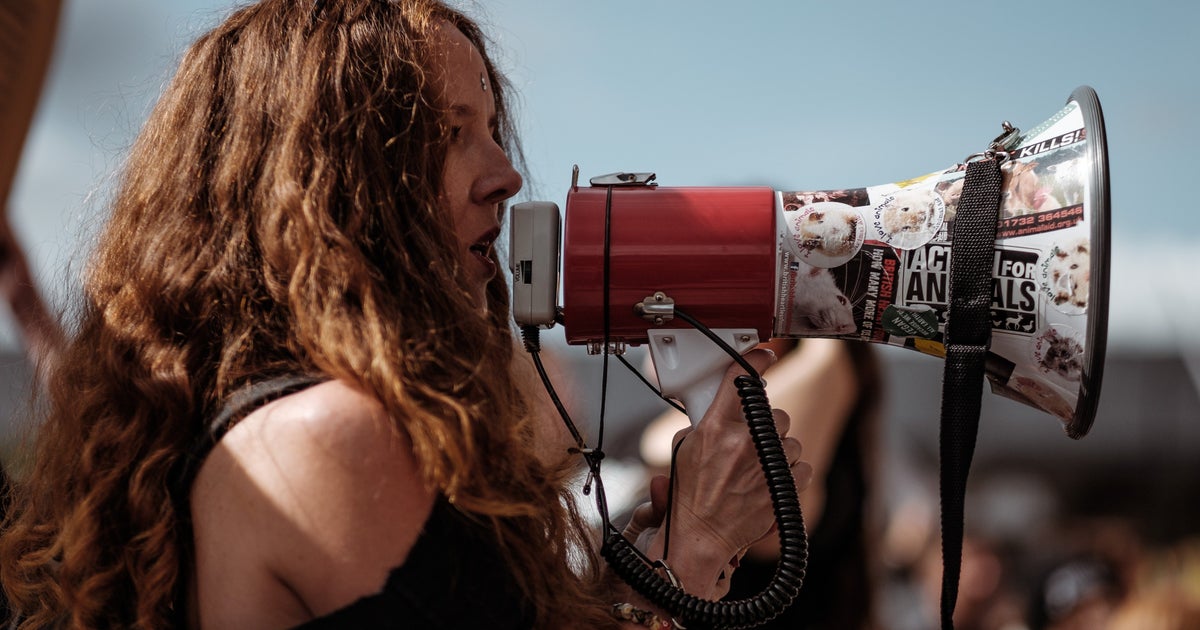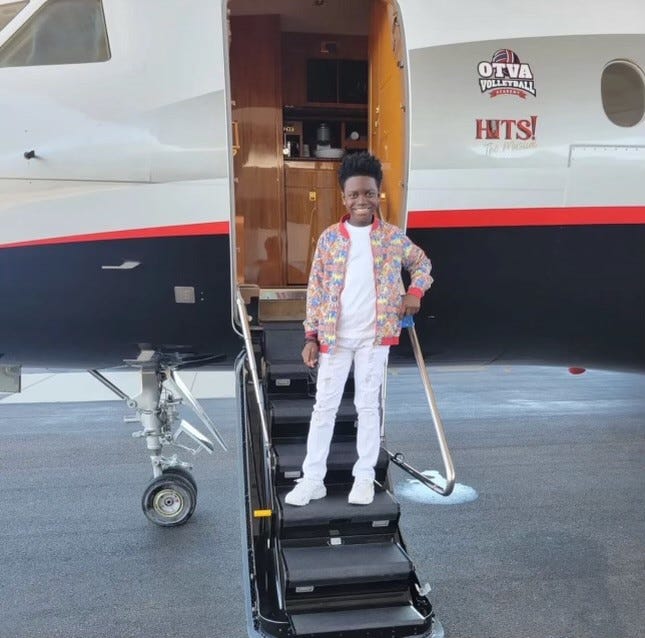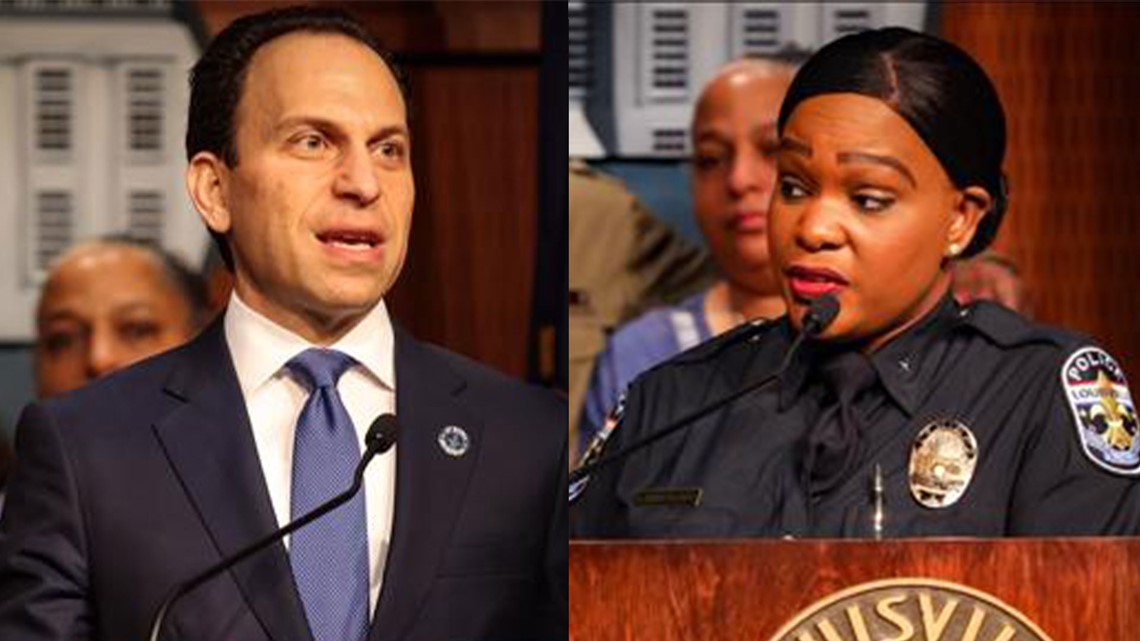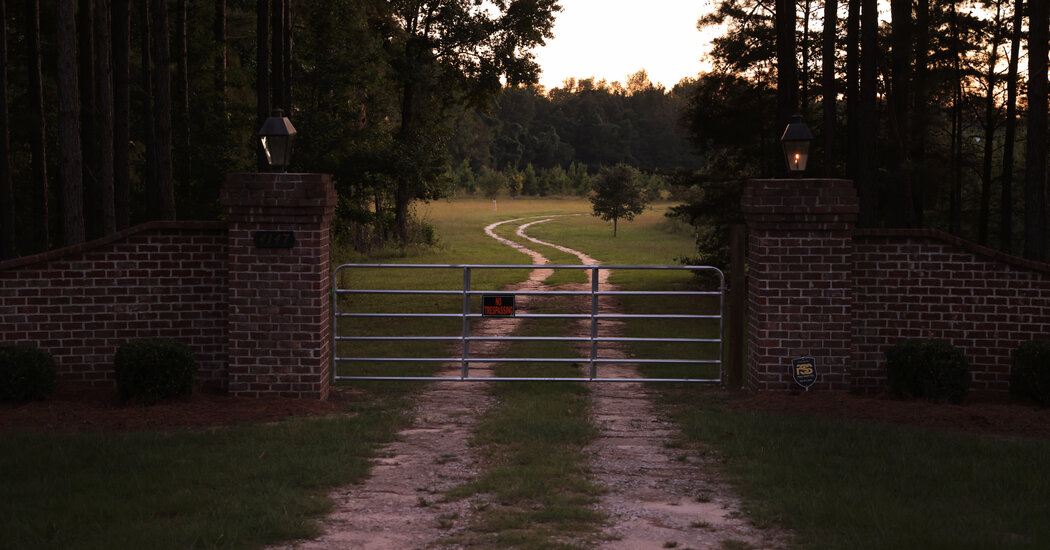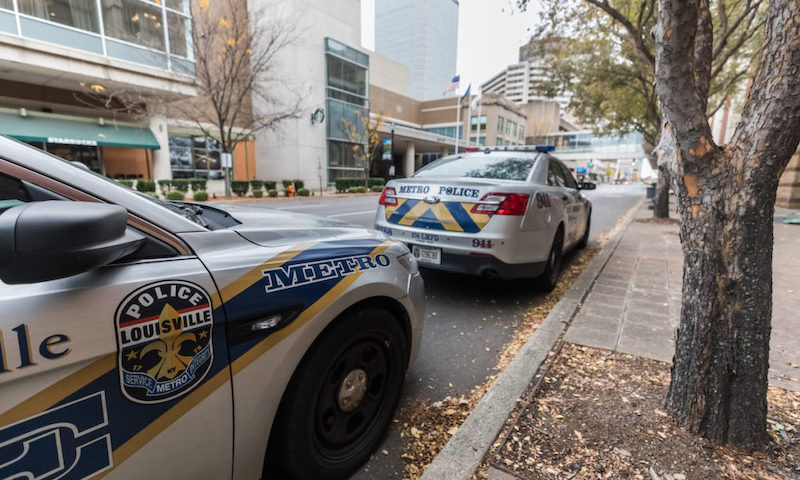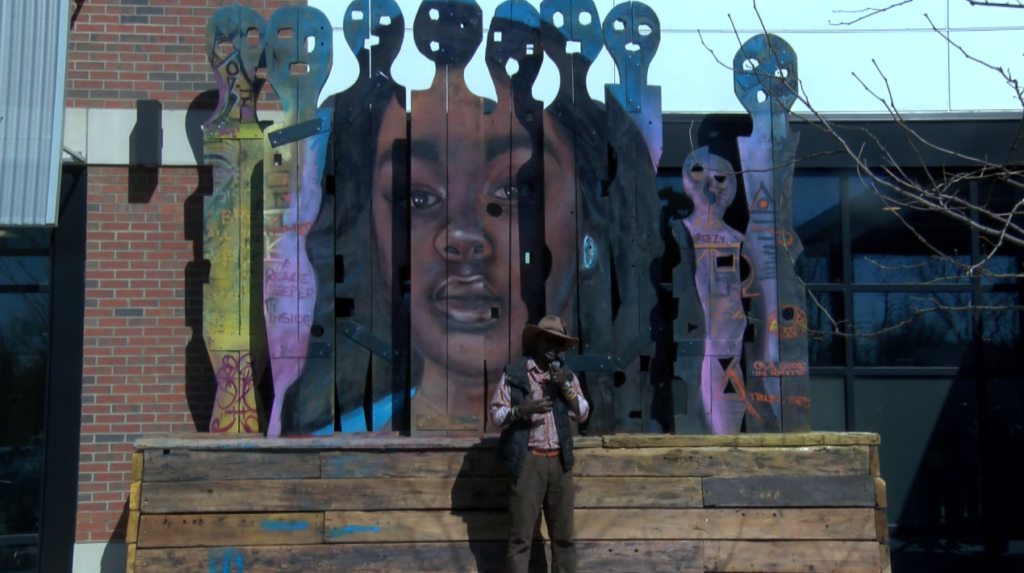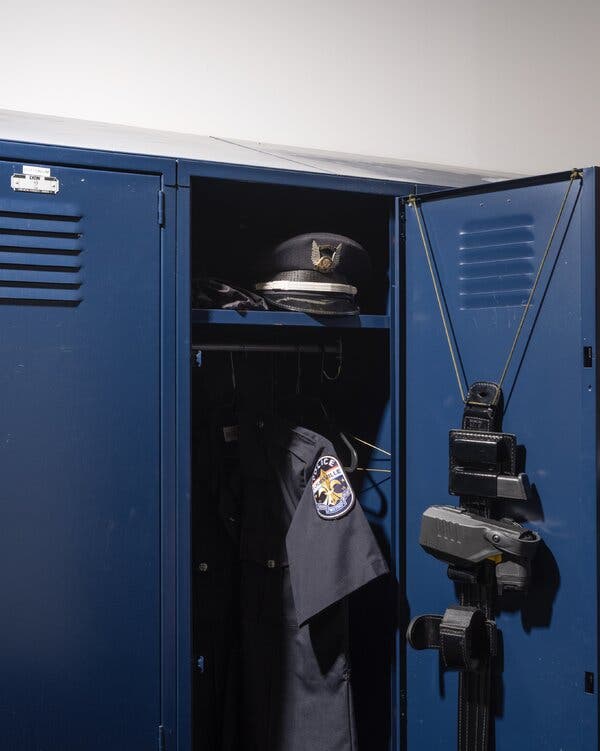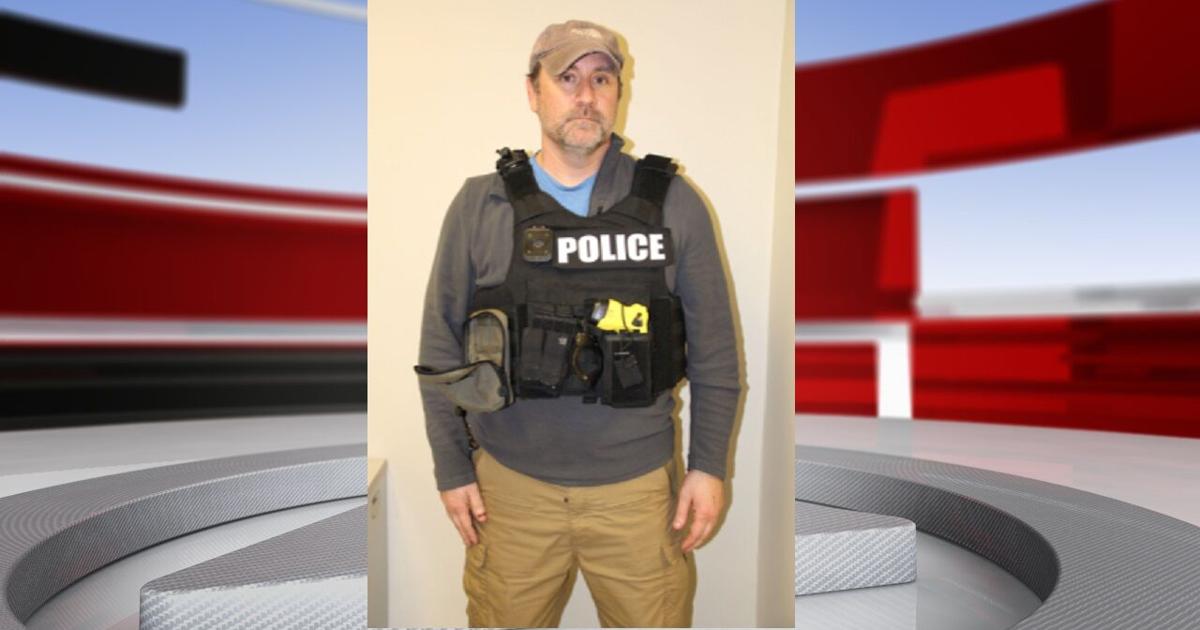Listen to This ArticleAudio Recording by AudmTo hear more audio stories from publications like The New York Times, download Audm for iPhone or Android.Col. Paul Humphrey moved into the Louisville Metro Police Department’s training headquarters last March, unpacking in a first-floor office with harsh fluorescent lights and an old heater vent rattling above. A sheet of plexiglass covered the room’s lone window, a precaution taken during the long summer of 2020, when protesters gathered in the streets for more than 100 days in a row to denounce the killings of Breonna Taylor and George Floyd. They had marched outside the building, rearranging letters on a welcome sign to read, “I SEE MURDERERS.” Now Humphrey filled his new office with policing books as he began working to fix one of the country’s most hated police departments.Humphrey, who is 39, joined the agency at 22, full of ambitions to protect the community he grew up in. He spent a couple of years on patrol before becoming, at 5-foot-9 and 155 pounds, one of the smallest members of the SWAT team. Since then, he rose rapidly through the ranks, partly because of his abilities, but also because an exodus of officers left a leadership vacuum, resulting in a notably young department. He is one of the few high-ranking Black officers on Louisville’s police force, an agency that is 17 percent Black, in a community that is 24 percent Black. “You hear these stories about cops who do heroic things, and they say, ‘I didn’t sign up to be a hero,’” Humphrey told me. “No, I’m sorry. I signed up to be a hero. The vast majority of cops signed up to be somebody’s hero.”Humphrey is deputy chief of police and head of the city’s new Accountability and Improvement Bureau, whose primary task is to rehabilitate the city’s Police Department. In Humphrey’s office over the past year, there has been talk about mission and purpose, technical discussions about audits and body cameras and rumination over the mistakes the department has made — over where policing has gone wrong. “Nobody wants to be the world’s villain,” Humphrey said. “When you signed up to do good and people are telling you what you’re actually doing is harmful, it does cause you to do some soul searching, and probably you should do some soul searching.”In recent years, even as police misconduct has been exposed across the country, the behavior of Louisville officers has stood out. In 2017, it was revealed that two officers for years had been molesting teenagers in the department’s youth Explorer program. In 2018 and 2019, detectives on a violent-crime unit bought drinks from gas stations, announced on the police radio that “someone was thirsty” and hurled the beverages at their targets. Dozens of these attacks were recorded to be shared with their squad. Then there were the many wrongful traffic stops, including one that circulated widely in 2018, during which officers pulled over a Black former homecoming king, an honors graduate, and handcuffed him while a drug dog sniffed his mother’s Dodge Charger. By the time officers slammed a battering ram into Breonna Taylor’s door on March 13, 2020, the city’s Black community had long been dealing with a majority-white police force that was halfheartedly trained, poorly supervised and laxly disciplined.Humphrey sometimes shook his head at the shameful litany. Is every police department this screwed up? he wondered. Sometimes he would read about a bad officer someplace else — like the one in California who exposed himself during a victim interview — and think with relief, At least that wasn’t us. In Louisville, hundreds of officers have resigned or retired in recent years, leaving the force short by 300 people.Alec Soth/Magnum, for The New York TimesIf they’re being honest, Humphrey says, most cops — and most people — have done or said things they regret. Including him. During the unrest of 2020, a member of the National Guard fatally shot a beloved Louisville BBQ stand owner during a clash as officers tried to clear a parking lot. When Humphrey arrived, not yet fully aware of what happened, he asked other National Guard soldiers how they were doing, then added, “I’m glad we could get you onto a little something.” The comment, recorded on his body camera, made the news. Humphrey told me that it was a clumsy attempt to break the tension of a stressful situation but that it came off as callous. Fixing a police department, Humphrey says, is like trying to fix a lumbering machine of countless parts. One of the biggest challenges is persuading police officers — headstrong, critical and often beleaguered — to be enthusiastic about another makeover. “Police officers hate two things,” Humphrey told me. “Change and the way things are.”But change is coming to this agency of 1,000 officers. In 2021, the Department of Justice resurrected its “pattern or practice” investigations after a period of dormancy under former President Donald Trump, probing Minneapolis, where Officer Derek Chauvin killed George Floyd, and Louisville, where officers shot and killed Breonna Taylor. After nearly two years of investigating, the Department of Justice is expected to release a scathing report on the Louisville department, cataloging use-of-force issues, biased policing practices and sexual misconduct by officers. Commanders anticipate that the process will result in a federal consent decree that would mandate widespread changes to policing practices in the coming years.The profession, Humphrey and other Louisville officers agree, is in the midst of a historic identity crisis. A policing career used to offer good health insurance, a solid pension and some degree of respect. Nearly all of those benefits have been eroded. Officers have come to question whether the long hours at relatively low pay, working a sometimes dangerous job that could at any moment thrust them onto the nightly news, is worth it. For many, the answer has been no. In Louisville, hundreds of officers have resigned or retired in recent years, leaving the force short by 300 people. The Police Department has had four leadership changes since mid-2020, swearing in the latest interim chief, Jackie Gwinn-Villaroel, in January. Police recruiters, who used to draw hundreds of applicants for each academy class, have struggled to fill their funded 48 slots with qualified candidates; one recent class had only 15 students. In a 2021 survey, 75 percent of responding L.M.P.D. personnel said they would leave the force if they could.Interim Chief Jackie Gwinn-Villaroel, who took over L.M.P.D. in January. The department has had four leadership changes since mid-2020.Alec Soth/Magnum, for The New York TimesIn the meantime, Louisville is experiencing record crime. Criminal homicides have increased drastically, from 89 in 2019 to 161 in 2020, the highest annual number in city history. The next year was even worse, with 177. In 2022, the total went down to 160, but by mid-February this year, there had already been 23 homicides — on pace to be another dismal year. Gun violence has risen sharply, disproportionately impacting Black men. In the first few weeks of this year, preliminary data showed that 71 percent of victims involved in the city’s nonfatal shootings were Black.Many of the several dozen current and former Louisville police officers I spoke with over the past 15 months said they have come around to the idea that years of institutional arrogance, defensiveness and misguided policing strategies have caused a loss of public trust. “We had it coming,” said Adam Sears, a former Army staff sergeant who joined the force in 2007 and now works in the department’s training unit. “People question our legitimacy,” Sears continued. “And you know what? They’re not wrong.”I have conducted hundreds of interviews with police officers in my two decades as a reporter. Even as the ubiquity of cameras further exposed the failures of American policing, showing us the dying moments of Eric Garner, Tamir Rice, Philando Castile and others since 2014, few of the officers I spoke with believed that the rising criticism of their profession was warranted. More often they blamed the outrage on a misinformed public and an untrustworthy news media. But after the killings of Breonna Taylor and George Floyd in 2020, and the historic protests they sparked, I began to perceive a shift. There was growing recognition that policing needed to change.Plenty of officers still believe that the public remains naïvely unaware of the difficulty of their jobs, and of the violence, death and disagreeable human behavior that they face. Many think the videos have misrepresented the scope of the problem, pointing out that officers have millions of interactions with the public annually and that only a tiny fraction turn fatal. But the deaths of Taylor and Floyd made it difficult for officers to hold tight to the old defenses, and many no longer are. I went to Louisville to report on what was happening there — how the police were thinking about their jobs during this period of change.On a cold night in February, a Black 48-year-old sergeant named Jeryl Tyson prepared for another late watch patrol in the city’s Second Division. At 6-foot-5 and 340 pounds, Tyson, a former college defensive lineman, has a presence that encourages compliance; he has never fired his gun on duty in his 16 years on the force. Tyson began his shift in the station’s briefing room, finishing a Subway sandwich. All week he had been keeping up with the latest news about Tyre Nichols, the Black man who died after being beaten by officers in Memphis. Tyson had seen the hospital photograph of Nichols, his face battered and swollen, a breathing tube in his mouth. He told me his first thought had been, Not again. As he heard further details about the case, he became frustrated, then angry. After learning that five officers would be charged with Nichols’s murder, he thought, I’m good with that.Tyson climbed into his black Tahoe just after 8 p.m. to begin his 12-hour shift. The Second Division, one of the city’s eight policing districts, borders part of what was long ago known as Louisville’s Harlem, a once-thriving area of Black businesses, theaters and nightclubs, which has since been suffocated by economic neglect. Now the Second Division is a collection of largely poor neighborhoods with few grocery stores and some of the city’s highest murder rates. Police officers sometimes call it the Wild West. Tyson helped supervise 13 officers on his shift, and his job was to make sure they followed policy, respected residents and did not get themselves or anyone else killed. Tyson’s father, uncles and great-uncles were cops. As a child, Tyson preferred police cars to Tonka trucks. He grew up watching “CHiPs” and “T.J. Hooker.” All he ever wanted to do was be a police officer. In recent years, though, Tyson, like many of his colleagues, has questioned whether he wanted to continue working in law enforcement. He told me this hit him hard in 2020. He initially gave his fellow officers the benefit of the doubt in Taylor’s death, but troubling accusations kept surfacing: that one officer had fired recklessly into an occupied apartment complex, that investigators had lied on a search-warrant affidavit and then met secretly in an officer’s garage to get their stories straight. Tyson told me he had something like an emotional breakdown, uncertain whether he could keep wearing the uniform. He looked over retirement paperwork but decided to stay, because he didn’t want to be the guy who ran away when things grew hard.As Tyson drove, he kept his windows down, listening to the streets outside, his face reflected in the glow of the computer dispatch screen. He passed liquor stores and a Family Dollar. He saw a man he knew and rolled his window down farther for a friendly exchange. He told me later that the man was married to a “good woman” who had lost two sons to gun violence, kids who “had good hearts” but “didn’t always make the right decisions.” Down the road, he told me about another mother who had lost three sons, one of whom Tyson watched grow up, a funny, polite child who said, “Yes, sir,” then got shot in a dispute over a game of dice. Many of the people in the Second Division, some of whom he’s known since he was a rookie in 2007, want the police in their communities, Tyson told me. They also want to be respected. Sgt. Jeryl Tyson, a 16-year veteran of the Louisville Metro Police Department, during his 12-hour patrol shift in the Second Division, which has some of the city’s highest murder rates.Alec Soth/Magnum, for The New York TimesTurning down Hemlock Street, Tyson saw a man at the entrance to a convenience store. As the man stepped inside, he raised his hand and gave Tyson his middle finger. Tyson told me that when he started out 16 years ago, that man’s gesture would have been a “point of contact” — a reason to get out of the car. “There were things you didn’t let go unchecked,” he told me. Now Tyson counsels his rookies to view such moments as “bait” — the start of a series of bad decisions that might lead to their national-news debut. He tells them that they are expected to have emotional intelligence and accept that the police have earned some of those middle fingers.Midnight approached, and Tyson was still driving around. Every so often a piece of equipment in his car beeped. It was an automated reader taking pictures of license plates, alerting him when one came up listed as stolen. On one residential street, he got a hit on a parked car with Florida plates, reported stolen from a rental company a few weeks earlier. He radioed another patrol car. They would summon a tow truck and get the car back to the company. These days, finding stolen cars, particularly unoccupied ones, seemed like a good night’s work.Tyson was far from the only officer whose perspective on the job was changing. When I spoke with Sears, the former Army staff sergeant, he was teaching a jiu jitsu class, which is becoming popular in law enforcement because of its emphasis on using the least amount of force necessary, relying on techniques like locks and holds rather than punches. Sears, a white officer who works in the department’s training unit, became a cop at 27 after tours in Iraq and Afghanistan. He graduated from the police academy in 2008, believing, as many cops did then, that drugs were the root of most crime. The best way to help struggling neighborhoods, he thought, was to “go find drugs and lock guys up.” Sears worked in an area that included public-housing projects plagued by shootings, crack-cocaine use, armed robberies and murders. Over time, he told me, it was hard for cops not to see the projects as “target rich” environments. It was a big deal to arrest someone for their first felony, he said, because people who have been convicted of a felony can’t legally purchase or carry guns.In the 14 years since, Sears had his own struggles, at one point fighting depression and gaining 30 pounds. He encountered drug addiction in an unexpected place: A good friend couldn’t meet for a fishing trip because he was on house arrest; he confessed to having an opioid problem. Sears, now 41, knows that life is more complicated than his rookie self realized.A couple of years ago, Sears saw a news story about how many felons lived in the neighborhood he once policed. It now seemed clear to him that chasing after male residents and branding them felons hadn’t made the neighborhood better or safer, at least not over the long term. What Sears didn’t realize back then, he told me, is the cascade of negative effects that their methods caused — families torn apart, fathers in jail, people who couldn’t get jobs because of criminal records. The community had wanted good policing, Sears said, but too many people had been caught in the department’s wide net.“We were so focused on trying to police our way through much bigger issues that we didn’t think of the long-term consequences,” Sears told me. He felt uncertain about the part he played, and wondered if he did more harm than good.Many Louisville police officers began a period of soul searching during the summer of 2020, after spending night after night sweating in riot gear, dodging rocks, frozen water bottles and the occasional bullet, realizing how profoundly they’d lost the respect of their community.The circumstances that led to Taylor’s death followed one of law enforcement’s chronic patterns. First came a surge in violent crime. Police commanders then created a series of specialized units to target guns and drugs in “hot spots.” In Louisville, one of those units was known as Place-Based Investigations (P.B.I.). In late 2019, P.B.I. detectives homed in on their first target, Jamarcus Glover, a 29-year-old they suspected of selling crack and other drugs in the city’s West End. The police claimed that his operation was growing; they watched as Glover broadcast live on Facebook, smoking blunts and waving around large wads of cash. On March 12, 2020, police assembled a team of several dozen officers to serve five search warrants related to Glover’s operation. One of those locations was Taylor’s apartment, which they included because she once dated Glover. They said they suspected that she might be holding packages or drug money, claims that were never substantiated. After midnight, Taylor and her boyfriend, Kenneth Walker, rose from bed when they heard a loud banging. After the police broke the door off its hinges, Walker fired his gun, striking an officer in the thigh. The police returned fire, killing Taylor.A mural with an image of Breonna Taylor, a victim of police violence, by the local artist Damon Thompson, in the city’s downtown First Division.Alec Soth/Magnum, for The New York TimesIn the days after officers shot Taylor during the raid, many within the department wondered how much bad publicity her death might attract. It was something all police officers worried about, whether a questionable shooting would turn their city into the next Ferguson, Mo., where unrest followed Michael Brown’s killing in 2014. Two officers told me they were somewhat relieved when the national focus turned to George Floyd’s death two months after Taylor’s, believing that the case was so egregious it would take the heat off Louisville.But instead of eclipsing Taylor’s death, Floyd’s amplified it. On May 28, 2020, almost 11 weeks after Taylor’s death, the local newspaper, The Courier-Journal, published a copy of the 911 call that Taylor’s boyfriend made from the apartment. For many, the call dispelled any notion that Taylor’s boyfriend had intentionally shot at the cops. He told a dispatcher, “Somebody kicked in the door and shot my girlfriend.” Hearing the emotional call, people got into their cars and drove downtown. Once there, some began livestreaming on Facebook, urging others to join, and the crowd grew from a couple of dozen to several hundred. For the first time in its history, the Police Department issued an emergency “all call,” summoning every officer for immediate duty. Lt. Mindy Vance, a white, 41-year-old acting major in the Fourth Division, wasn’t usually on the front lines of police work, but seniority meant little during the months of unrest. “The message was: ‘Get your gear, and get your ass up there on the line! Now!’” Vance said. She drove to a staging area in a parking lot near downtown and reached into her trunk for riot gear, stored in a utility bag with other department-issued tools she had never used before. Her helmet was still wrapped in plastic. “I never in a million years thought I’d be using riot gear,” Vance told me later. “I’m thinking, How the hell do I put this stuff on?” As Vance lined up with colleagues, they could hear echoing noise downtown, rising and falling in waves, almost as if they were outside a sports arena. As they marched forward, Vance thought, Oh, God, we’re doing this. For Paul Paris, a Black officer who joined the department in 2010, going into the streets every night felt like being loaded into one of those amusement-park slingshot rides, where people passed out from being hurled into the air at dizzying speeds, uncertain whether they would return safely to ground. He told me that working the unrest was the most humbling experience of his career. When Paris looked into the crowd, he saw a nurse in scrubs, a U.P.S. deliveryman, a teenager in a red Chick-fil-A shirt. It was not a small group of activists; it was everybody. “You thought every single person in the city was against you,” Paris said.When Paris’s father joined the city police force in 1968, he was the only Black officer in his academy class. The department, which later merged with the county police to form Louisville Metro, had become more diverse since then, but Black officers still were underrepresented; it wasn’t unusual for Paris to be the only Black officer on a particular squad. He says he didn’t see many overt acts of racism on the force, but he sensed a more subtle form of othering, like the way some white officers referred to Black men as “Jay” (a slang term for a street thug) and Black women as “Quita” (a slang term for a Black single mother). It was surprising to Paris how comfortable officers were using these terms around him, because they seemed like racial slurs.Paul Paris, who joined the department in 2010 but has left for another local agency, at home with his son. Paris’s father joined the city police force in 1968 and was the only Black member of his academy class. Alec Soth/Magnum, for The New York TimesLike many colleagues, Paris was dismissive of Black Lives Matter at first, but over time, he saw videos that he found appalling and felt himself growing more frustrated with his profession. Paris felt it was a problem that many agencies churned out young white men from their academies, gave them badges and guns and promptly sent them into poor Black neighborhoods. For many of these officers, it was their first significant interaction with Black people. They would deal with a small percentage of criminals and “begin to assume that is the reality of Black people,” Paris said. During the 2020 unrest, some protesters reserved special scorn for Black officers, and after a while, their words got into Paris’s head. “When 500 people are telling you the same thing, you start to think, Oh, [expletive], am I an Uncle Tom?” (Paris has since left the force for another police department and is suing the L.M.P.D. for retaliation after he reported sexual harassment of a teenager in its Explorer program.)As protests continued nightly, anti-police sentiment seemed to spread across all quarters of the city. Beth Ruoff, a white officer who was born in Louisville and had always worn her uniform proudly around town, noticed Back the Blue signs disappearing from front yards, even in mostly white neighborhoods that were long friendly to police. One of Ruoff’s neighbors explained that she still supported the police but as a small-business owner, she had to be careful. Many of Ruoff’s colleagues peeled the pro-police stickers off their family cars. One of them told Ruoff that her daughter had come home from elementary school upset because the other kids found out her parents were cops. Ruoff, now a missing-persons detective, used to drive straight to her daughter’s soccer games, cheering from the sidelines in her police uniform. Now she felt self-conscious, uncertain of what the other parents would think. She kept extra clothes in her car and changed when she went off duty. “I had never looked at myself the way I saw people looking at me,” Ruoff told me.Studies would later categorize the 2020 protests as overwhelmingly peaceful, based on the relatively low numbers of injuries and property damage. But many officers did not experience them as peaceful, largely because of the number of guns in the crowd and the level of verbal vitriol directed at the police line. Occasionally the anger spilled over — one Louisville officer’s uniform caught fire from a blaze started by a Molotov cocktail, and two other officers were shot in the street, taken to the hospital with wounds to the hip and abdomen. Several officers later would be charged with using excessive force during the protests. One was Cory Evans, a white Army veteran and National Guard member who was diagnosed with anxiety, depression and post-traumatic stress disorder symptoms after tours in Afghanistan and Eastern Europe — facts he did not disclose in his police application. Evans, 35, joined the department in 2014 and over the years, while working in some of the city’s busiest and most violent neighborhoods, became irritable and angry, says his wife, Jenna, a nurse practitioner. Evans was involved in two dozen use-of-force incidents from 2015 to 2020.The protests of 2020, Evans told me, were more stressful than his deployment to Afghanistan. On the first night, he was tasked with driving a police booking van, usually a mundane job, but the crowd surrounded the van and tried to flip it over, he said. Evans jumped out, leaving his shield and gas mask behind, and sprinted toward the police line. Shortly after, shots rang out as an unknown gunman fired into the crowd, wounding seven people. He helped a protester who had been shot by packing the wound with QuikClot trauma gauze. On the fourth night of the protests, Evans and a group of cops were pursuing a rowdy crowd flouting the city’s curfew. He would say later that he was exhausted, hungry, thirsty and angry that he had been working 16-hour days, spending his wedding anniversary away from his wife and two young kids, chasing people who were burning trash cans, breaking windows, shooting at cops, all for $28 an hour. Evans approached a white college student, who was kneeling in the street with his arms raised in surrender. He later pleaded guilty to striking the man with his 36-inch baton, opening a gash on his head that required three staples to close. In October, I went to see Evans at a U.S. penitentiary in Illinois, where he’d begun serving a two-year sentence. Wearing an army-green prison jumpsuit, Evans no longer resembled the muscular cop in his Police Department photograph; he’d lost 30 pounds. Evans told me he has many complicated feelings about what happened. On the one hand, he feels as if he did the best he could in a hard situation, and in return he was “sacrificed to the woke gods.” On the other, Evans said he wishes he had been less “gung ho” in his policing, both during the unrest and throughout his career. If he had, Evans told me, he might be home with his wife helping raise their boys, now 5 and 7, who believe that their dad is in “time out for grown ups.” Instead, Evans spent his days among inmates who call him “Captain Caveman,” on account of the long beard he’s grown, and working out with old gym weights alongside his closest friend inside, a former drug dealer from St. Louis.In emails exchanged over recent months, Evans told me that like many cops, he began his policing career with a romanticized view of the job, imagining himself helping old ladies across the street, catching bank robbers. But over time, the daily realities of policing, the things he saw, began to take a toll and slowly changed who he was. “There is so much more evil that goes on in the world that the lay person never sees,” Evans wrote. “They never hear about it, and if they do it is on some Netflix docudrama that doesn’t seem real. They have never gone into a house covered in urine and fecal matter. Infested with bed bugs and roaches where a baby is crying with a diaper full of [expletive] with its bottom raw. The mother and father passed out high again.”Evans told me he once arrested a kid who he suspected had stolen a car, and after getting to know him and his single mother, he gave them his Briggs & Stratton mower. He told me he hoped the boy could make money cutting grass and showed him how to clean it out with a hose, how to fit it in the trunk of his mom’s car. A couple of months later, Evans told me, he saw the kid back on the streets, and when he asked about the mower, he said he’d pawned it for $20. “The job,” Evans told me, “will break a man over time.”The 2020 protests seemed to break many cops. After months on the protest line, Louisville police officers began dropping off their equipment. They were resigning faster than the department could store their gear, which spilled off a table inside training headquarters. Erika Shields took over as the Louisville police chief in January 2021. Many chiefs enjoy a honeymoon, if brief, with their new communities, but Shields, a white woman, was controversial from the start. Shields resigned as the Atlanta police chief in 2020 after one of her officers killed a Black man, Rayshard Brooks, outside a Wendy’s. Some activists called her hiring “tone deaf” and a “slap in the face.” She soon angered the officers under her command too. During her first news conference in Louisville, Shields invoked race as part of the reason for Taylor’s death. “This doesn’t happen to white people,” Shields said. “And don’t tell me that it’s because the Black people are where the crime is, Black people are where the violence is. That’s crap.” The comments did not go over well with her department, which is around 80 percent white. Erika Shields took over the Louisville Metro Police Department in January 2021. She recently resigned.Alec Soth/Magnum, for The New York TimesWhen she arrived, Shields told me, the department was in worse shape than she imagined. There were dozens of internal-affairs files backed up on her desk, some dating back years, some with disturbing complaints about current officers. The department had no official disciplinary matrix, Shields said. She found inadequate facilities, “embarrassing” lesson plans at the academy, no regular audits of body-camera footage to identify officer misconduct and a continuing exodus, in part because the city had underpaid officers for years, even requiring them to buy their own guns. Some of the department’s most important units, notably the special victims unit, were rife with internal sexual affairs that affected their productivity. As the city logged record homicides, Shields was troubled to learn that her detectives had an abysmal 32 percent clearance rate, well below the national average of about 60 percent at the time. She learned that they had been trying to solve cases without DNA because the state lab system, woefully underfunded, took more than a year to return test results. After Shields allowed the homicide unit to contract with a private lab, the clearance rate rose to 52 percent.Shields came into the job ready to aggressively tackle violent crime but realized she had a more immediate problem: the mental health of her officers. After months of protests, a pandemic and a continued rise in shootings, Shields believed much of the force was suffering from PTSD. What she needed most, Shields thought, was a good shrink. The department had a counselor on staff, but Shields wanted a trained doctor who could supervise two or three therapists. She didn’t feel confident in her officers’ mind-sets, their training or their decision making. They often seemed reluctant to do their jobs. One night in April 2021, Shields told me, a couple of dozen protesters took over an intersection in the Highlands, a mostly white neighborhood. The group was protesting the police killing of Daunte Wright, a 20-year-old Black man who was fatally shot in Minnesota by an officer who said she’d meant to deploy her Taser but instead drew her gun. They were refusing to let cars pass. Business owners called 911, asking why police were letting protesters shut down their restaurants, already hit hard by the pandemic.Shields was wondering the same thing. As she followed along with supervisors’ group texts, she kept waiting to hear that officers were taking action, but a half-hour passed, then another. After protesters dragged a picnic table and patio chairs into the intersection, Shields began blowing up the phones of her commanders, asking why they were allowing such lawlessness. Once protesters slowly dispersed after midnight, officers quietly moved the furniture back to the sidewalks. The next day Shields called a meeting with unit supervisors, who explained that their officers were afraid to take action, worried that no one would have their backs if something went wrong. “It was really eye opening,” she told me. “It wasn’t that these folks didn’t want to work. They didn’t dare to work.” It drove home that she would need to move carefully. “I realized, there’s no way in heck we can go out and just be tackling violent crime, because if one thing goes wrong, this whole thing is going to blow.” I first met Shields in late 2021 as she sat at a conference table in her office, surrounded by half-packed boxes. In what seemed too obvious a metaphor, the police headquarters building had been largely evacuated because of a long list of violations, including sewage leaking from ceiling tiles. That week had been busy for Shields. There had been a triple shooting, a Buick stolen with a 6-year-old boy inside and a news conference announcing the arrest of two teenagers for killing another student in a drive-by shooting at a school-bus stop. At a public meeting, a Black councilwoman had nearly burst into tears, pleading with Shields to fix the department because “we can’t take any more.” People living in the midst of violence want more police presence, Shields told me, but they don’t want heavy-handed tactics.The next day, Shields sat at the head of a table looking out over the command staff at the department’s weekly meeting to discuss crime levels in the city. About 30 minutes passed before she offered anything that sounded like a correction. “I have a question,” she said to Maj. David Allen, who was giving a rundown of car thefts. “Just help educate me. You’ve got 66 traffic stops but only 30 traffic citations, which seems like quite a difference.” Shields asked about the gender and racial breakdown of the stops in order to determine whether certain groups were receiving preferential treatment.“I haven’t heard anybody talking about that,” Allen replied. “I just assumed — ”“Don’t ever just assume,” Shields said. She looked around the room and added: “Please, guys. That’s what got us here.”Shields asked the major to go through the data and detail who was ticketed and who was released. “You’ve got to stop believing that we’re just doing the right thing,” Shields said. As Shields neared the end of her second year in Louisville, she felt as if she was making progress — violent crime was down 17 percent — but she faced growing criticism for not being visible enough in the community. For not being transparent enough with department records. She wasn’t working hard enough, people said, to repair trust. Shields told me that in January, the city’s new mayor, Craig Greenberg, pressured her to resign, saying he wanted to move in a “new direction.” Shields defended her record: She said that her community outreach had been hampered by Covid, that her control over records had been limited, particularly after another city department took over public-information requests, and that she also had her hands full fixing internal problems. “There were so many things that were so, so broken.” Lt. Donny Burbrink’s phone buzzed around 6 p.m. on a Monday night in January. He finished a slice of leftover pizza, kissed his wife and kids goodbye and climbed into his black Ford Explorer. He was headed to the scene of the city’s 15th homicide of 2023. This one was in the Fifth Division, an area with affluent neighborhoods east of downtown. There would probably be reporters here, which irritated Burbrink, because that didn’t happen in the city’s poorer West End, where his detectives spent most of their time, as Black men died by the dozens.Burbrink, a white 43-year-old former Marine, has spent the past couple of years traveling the city at all hours, called to a new homicide scene about every two days. He shows up in his camel-hair coat, a Diet Mountain Dew in his hand. He’s been a cop for 21 years, following the path of his father, a cop for 40.Lt. Donny Burbrink, who commands the homicide unit, surrounded by the department’s many cold-case files.Alec Soth/Magnum, for The New York TimesBurbrink supervises four sergeants and 16 detectives working new murder cases in a cubicle-filled space they call the Dungeon. As the number of annual homicides started spiking, people wanted to know why. Burbrink would tell them he didn’t have a clue. If pressed, he would suggest the perfect storm of 2020 — a global pandemic, historic social unrest and a dramatic retreat by America’s police officers.Burbrink keeps hearing people talk about the need for the police to “rebuild” trust, but he doesn’t like that word, because it assumes it was once there and then lost. In his two decades of policing, there has always been a lack of trust between the police and Black communities, in Louisville, Baltimore, New York and most every other part of urban America. “You overpoliced areas, saturated them with young officers trying to make stats and you disrupted trust,” Burbrink told me, “instead of us doing stuff early on to work with the community and fix problems.”He added, “You can’t throw a net over an entire area and hope you catch that big fish every now and again.” Broad-brush policing strategies, including an overreliance on pretext stops, stop-and-frisk and small-time drug arrests, have fallen out of favor across the country, for good reason, Burbrink says. Now police commanders are struggling to figure out what to do instead. When society isn’t working, when policing is ineffective, it shows up in Burbrink’s unit, in the form of bodies. He knows that policing needs to reform, and he wishes experts and academics and police chiefs and activists would figure out what to do already. “I can’t get into the whole ‘reimagining policing’ thing,” Burbrink told me. “That is so far above my pay grade. Nor is that a problem I want to have to tackle. Your job is to implement policies, practices and procedures, and my job is to follow them. I’m good with that.”Burbrink is in favor of anything that the mayor or the police chief or the Justice Department can think of to make policing better and people safer. But he’s not sure anyone, particularly the federal government, can fix humanity’s dark heart. This year, his unit was summoned to a house to investigate a dismembered body, finding a man’s head in a suitcase, his arms and legs in trash cans out back. What his detectives can do, Burbrink says, is try to solve cases. He believes that his division is vital to establishing trust with the community. Many of the city’s murder victims are Black men or boys — 776 of 1,293 since 2011, Burbrink told me. If the police can’t deliver justice to those families, they assume officers don’t care. Criminal homicides have increased dramatically in Louisville, from 89 in 2019 to 177 in 2021, the highest annual number in city history. By mid-February this year, there have been 23 homicides.Alec Soth/Magnum, for The New York TimesThat night, Burbrink walked down a narrow alley in the dark, back to a patio full of blood smears, a chunk of flesh on the porch. He stepped inside a small kitchen, a Bud Light sitting on the table next to a revolver, a bullet on the floor. The case would be assigned to one of Burbrink’s detectives, most of whom average about 10 new homicides a year, far above the recommended three to five. When he was sure his detectives had the scene under control, Burbrink walked out of the house, careful not to step in the blood. One of his daughters was texting, wondering if he’d have time to stop by the grocery store. Burbrink didn’t know how long he would be. He headed back to the office, hoping the next emergency call wouldn’t come until morning. Every Friday, Bishop Dennis Lyons convenes a community breakfast with police officers at the Gospel Missionary Church in Louisville’s West End. Lyons, who is Black, started holding these breakfasts in early 2020 to give community members — grandmothers, ex-convicts, teachers, politicians, nonprofit leaders — a chance to talk to their neighborhood officers, to share a meal and get to know one another. On a recent morning, a couple of dozen people sat together around a few tables eating sausage, eggs and grits, drinking coffee and talking. Several officers took turns with a microphone.Bishop Dennis Lyons and Assistant Chief Steve Healey in February at a weekly community breakfast at Gospel Missionary Church, where the goal is for Louisville residents to get to know their neighborhood officers.Alec Soth/Magnum, for The New York TimesCharles Bradley, a Black officer who works in the community-engagement unit, reminded residents about his upcoming bowling event for the Police Activities League. He told those gathered that he hadn’t been seeing many “Black and brown kids who look like me” at previous events and asked residents to spread the word. Todd Hollis, a white lieutenant who works in the Second Division, mentioned the latest homicide near Cane Run Road, where a 61-year-old Black man was found shot dead in a van. Then came Assistant Chief Steve Healey, a stocky white guy with a buzz cut, who encouraged people to use the department’s anonymous tip line. “Don’t look at it as you’re calling to help us. You’re calling to help the victims and the victims’ families to get closure, and to help the neighborhoods to get these trigger pullers and shot callers off the street.”Not everyone has been happy about Lyons’s relationship with the cops. After he marched alongside members of the Fraternal Order of Police many years ago, protesters gathered outside his church, calling him a sellout, an Uncle Tom. “My own people marched against me,” he said. Lyons didn’t like it, but he understood. There had been so many promises broken, so much harm done. But Lyons saw no other choice. “Until we live in a world without evil,” he said, “we need police.”Jamie Thompson is a writer in Maryland and the author of “Standoff: Race, Policing and a Deadly Assault That Gripped a Nation.” Alec Soth is a photographer in Minneapolis. He has published more than 25 books, including “A Pound of Pictures” in 2022. His work is in the collections of the Museum of Modern Art in New York and the San Francisco Museum of Modern Art, among others.

